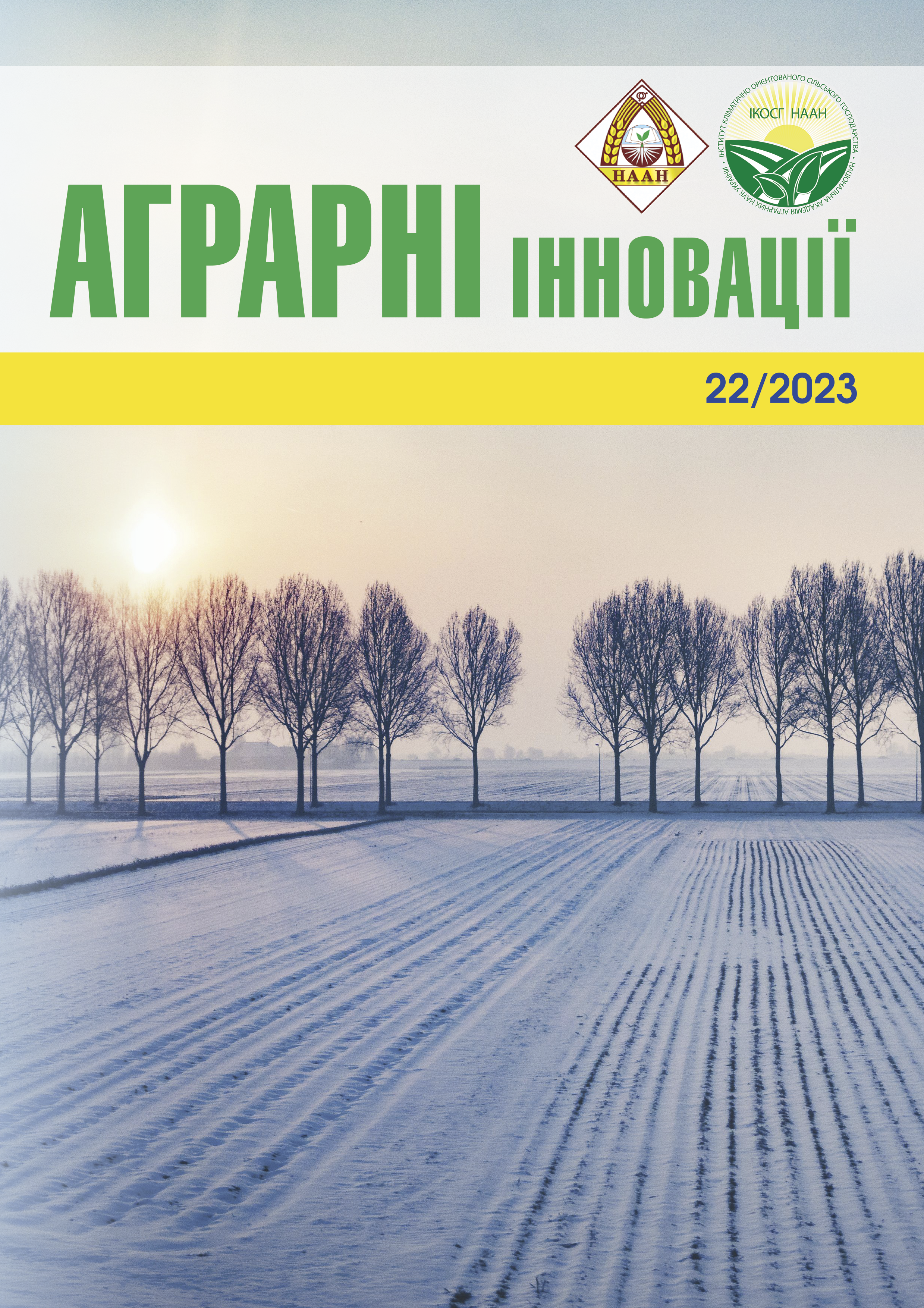WATER REGIME OF A TYPICAL CHERNOZEM DEPENDING ON AGRICULTURAL TECHNICAL MEASURES
Abstract
Purpose. Establishing the influence of the main tillage and farming systems on changes in soil water properties in sunflower agrocenosis. Methods. Field, statistical (statistical processing of research results), comparative and calculation. The results. Research has established that reserves of available moisture depend on farming systems and tillage. It should be noted that the use of systems of basic tillage creates an optimal structure of the plow layer and is one of the effective measures of moisture accumulation. At the beginning of the germination of sunflower plants, the highest reserves of available moisture in the arable 0-30 cm and meter (0-10 cm) layers of the soil were under no-shelf cultivation. The lowest reserves of available moisture were noted for the shelf multi-depth system of the main tillage. The application of shelf-free cultivation creates an optimal structure of the arable layer of the soil, crushed plant residues of winter wheat create a mulch layer on its surface that protects against moisture evaporation. Under the shelf multi-depth cultivation system, loosening and crumbling, crumbling of the arable layer of the soil is carried out. It was established that the semi-moisture capacity of the soil increased by 11.7-13.5% under the biological and ecological farming system compared to the intensive one. Under the differentiated cultivation system, the field moisture content of the soil had a tendency to increase within the range of 32.0-38.5% to the completely dry mass of the soil. Conclusions. On typical chernozems, the highest reserves of available moisture in the soil are formed during tillage. Favorable conditions for the preservation and accumulation of available moisture were noted for the intensive and ecological system of agriculture with no-shelf variants of the main tillage. Soil moisture retention improves due to the creation of a fine-grained soil layer.
References
2. Петренко С. В. Водний режим ґрунтів під посівами кукурудзи залежно від основного обробітку ґрунту. Вісник СНАУ. 2020. Вип. 3(41). С. 23-28.
3. Танчик С. П., Бабенко А. І. Вплив забур’яненості посівів соняшнику на водний режим ґрунту. Вісник аграрної науки. 2020. № 2. С. 24-29.
4. Центило Л. В. Вологозабезпеченість буряків цукрових залежно від систем обробітку грунту та удобрення. Наукові доповіді НУЬіП України. 2019. № 5.
URL : https://doi.org/10.31548/dopovidi2019.05.010
5. Цюк О. А. Вологозабезпеченість буряків цукрових за різних систем землеробства. Цукрові буряки. 2010. № 3. С. 20-22.
6. Черенков А. В., Шевченко М. С. Ткаліч І. Д. та ін. Рекомендації по вирощуванню соняшника. Дніпропетровськ. 2011. 14 с.
7. Capehart T., Allen E., Bond J. K. Feed Outlook No. (FDS–14D). Economic Research Service, USDA. April, 2014. P. 17.
8. Cluster and principle component analyses of maize accessions under normal and water stress conditions / S. B. M. Hafiz et al. Journal of Agricultural Sciences. 2015. Vol. 60. No. 1. Р. 33–48.
9. Tsyliuryk O.I., Shevchenko S.M., Shevhenko O.M. et al. Effect of the soil cultivation and fertilization on the abundance and species diversity of weeds in com
farmed ecosystems. Ukrainian J.of Ecology. 2017. № 7 (3) S. 154-159.






